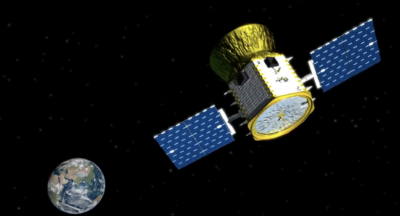
TESS Science Conference III by Jenny B. '25, MEng '26
My first science conference!
This summer, I started a new UROP01 Undergraduate Research Opportunities Program. Undergrads get to participate in real research with professors. with the MIT Kavli Institute of Astrophysics and Space Research, and it’s one of the coolest things I’ve gotten to do at MIT so far.
The project is involved with the Transiting Exoplanet Survey Satellite, or TESS, which is a NASA/MIT-led satellite that monitors and sends pictures of the sky for signs of exoplanets.
One of the methods that scientists use to detect exoplanets is the transit method. When an exoplanet orbits a star and passes in front, it causes the light coming from the star to the Earth to dip, which is a possible sign that there could be an exoplanet in that area.
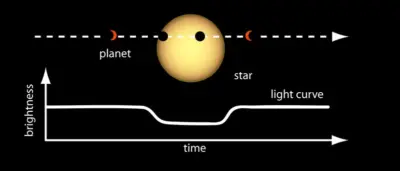
How the light curve changes while an exoplanet transits in front of a star
credit: NASA Ames
Sometimes, stray light from the Earth and Moon and reflects off of the lens hood and camera lenses. This is called scattered light, and it can cover up possible signs of exoplanets and other cool space phenomena in TESS’s images.
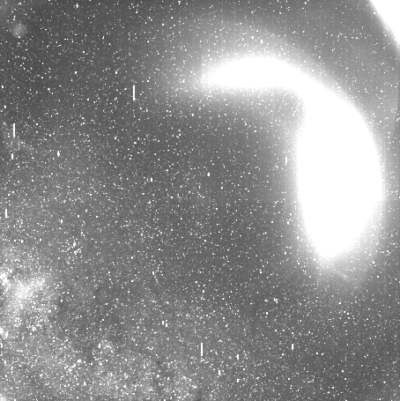
An example of scattered light in the top right, and a piece of the Milky Way in the bottom left
The project that I joined aims to remove these scattered light effects from the images with the power of machine learning. The ML model is given information about the actual image, as well as TESS’s relative position and orientation to the Earth and Moon, and then gives a prediction of what it thinks the image would look like if the scattered light wasn’t there. Researchers already have ways to remove unwanted noise from light curves, but hopefully this project can show how ML can help preserve the quality of the image data before light curves are generated from them.
Joey, who built up this project for a whole year under the supervision of Dr. Roland Vanderspek and Dr. Daniel Muthukrishna, just graduated and is off to get his PhD. He helped catch me up to speed with the code this summer, from pre-processing data to generating predictions. Luckily the third TESS Science Conference was being held this year, so we got to present a poster! Considering that this was my first conference, and that I got my registration fee waived, I was stoked to go.
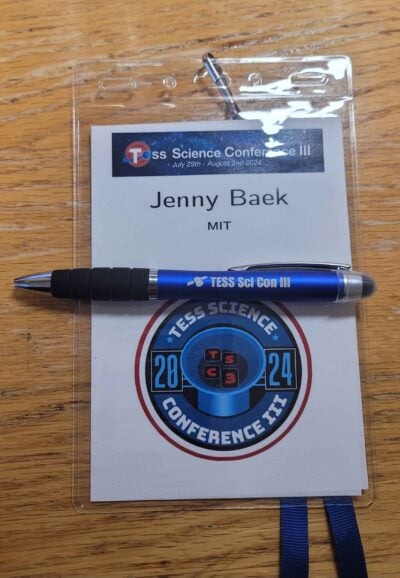
My conference name badge, and SPACE PEN
The TESS Science Conference is held every three years, where researchers involved with all aspects of the TESS mission gather and share their research. I met all sorts of people, from undergrads to post-docs, from astronomers to data scientists. I got to talk with people who came from places all over the world, such as Hawaii and Switzerland.
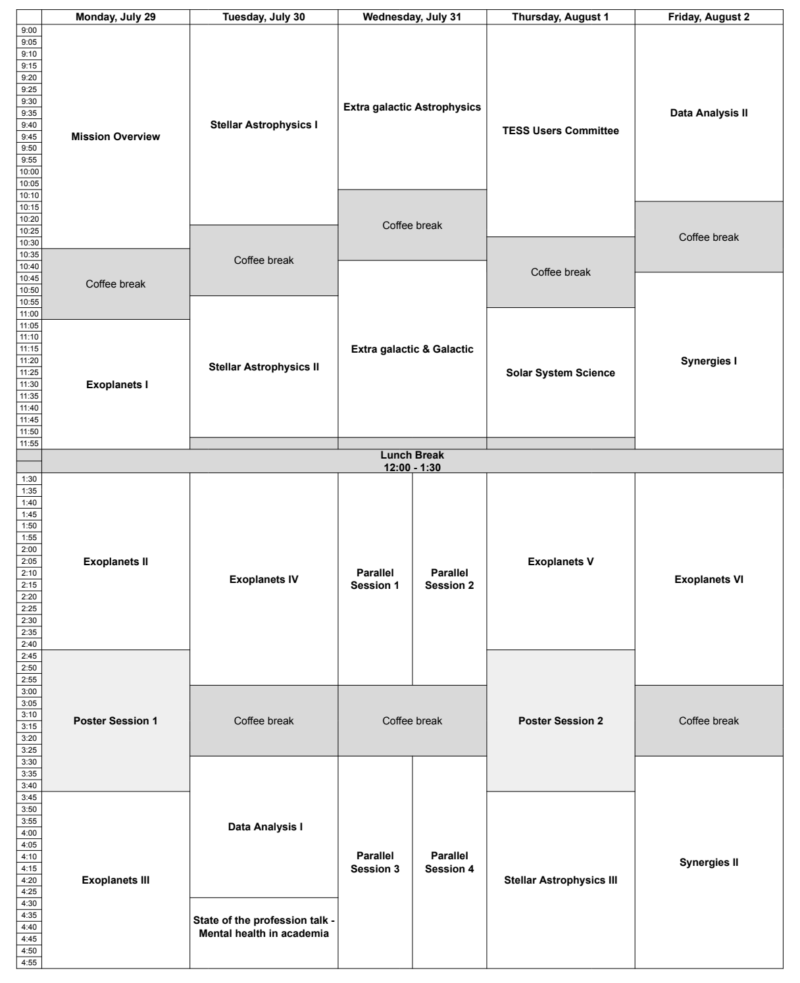
Block schedule (six exoplanet sessions!)
Each day, there were presentation sessions grouped by topic that were hosted in Kresge Auditorium. It was my first introduction to the world of astrophysics. Coming from an EECS background, I had to Google some of the astro-related terms—concepts like hot Jupiters, sub-Neptunes, and asteroseismology, as well as missions like CHEOPS and ARIEL.02 I wasn't sure where to share this so I guess I'll stick it in here—Joey Googled ARIEL because neither of us knew what it was. When Ariel the mermaid showed up on his phone, I suffered through five minutes trying not to burst out laughing in the middle of the presentation. Whenever someone who’s well-known in their field came up on stage, Joey leaned over and whispered to me, “That person is a BEAST.”
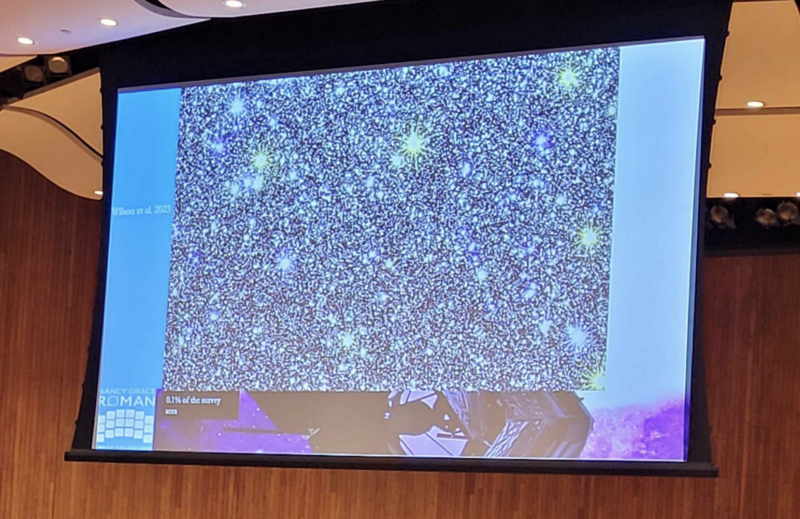
SPACE POWERPOINT

Who said scientists don’t have a sense of humor?
Either coffee breaks or poster sessions, both of which were hosted in Sala de Puerto Rico of Stud 2, were interspersed throughout the week. Other than how long they were held, they were pretty similar. Posters were displayed throughout the room, and people would grab whatever snacks or coffee were being offered while chatting with people, either explaining their own poster or asking others what their poster is about.
I was intimidated at first to be in a room full of super-smart people. But these sessions soon became one of my most favorite parts of the conference. First of all, the food? Delectable. I definitely took too many lemon-icing pastries.
Joey did almost all of the talking because he’s been with this project for a year, and I’d alternate between standing by the poster and checking out other people’s research, occasionally grabbing an extra raspberry-lime seltzer. When I asked him how he’s so good at public speaking, he said 6.UAT03 Oral Communication. From the course catalog: 'Provides instruction in aspects of effective technical oral presentations and exposure to communication skills useful in a workplace setting.' helped him improve, which I’m going to try to take before I graduate.
I also got to talk with people who I never imagined I’d get to interact with. When a NASA researcher came up and asked us about our poster, I got so excited when I saw “SETI Institute” on his badge (“Like from Contact!”) and asked him about what it’s like to work there. I chatted with several astrophysics researchers and asked them questions that have been bouncing around in my head since the start of the conference (“Why do people keep talking about hot Jupiters?”).04 Hot Jupiters are the easiest type of exoplanets to detect with what's called the radial-velocity method. I even met two other rising seniors who are majoring in physics and astronomy at Dartmouth, and I got to learn about what their coursework looks like (“Linear algebra also kicked my butt so hard that I had to take it again.”).
This week, it’s back to work. My new model just finished training after an eon as I write this sentence, so I need to add some code to the evaluation/prediction process tonight. But it was really inspiring to hear astro researchers talk about how they could see this UROP project being integrated into exoplanet research.
You could say that this whole experience has been a sweet memory.
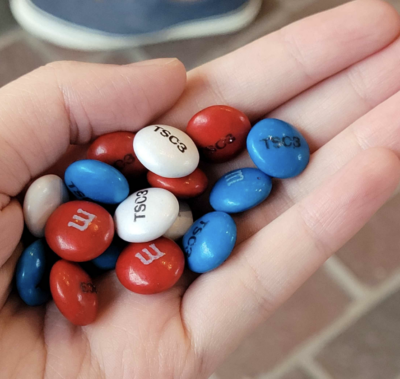
SPACE CHOCOLATE
- Undergraduate Research Opportunities Program. Undergrads get to participate in real research with professors. back to text ↑
- I wasn't sure where to share this so I guess I'll stick it in here—Joey Googled ARIEL because neither of us knew what it was. When Ariel the mermaid showed up on his phone, I suffered through five minutes trying not to burst out laughing in the middle of the presentation. back to text ↑
- Oral Communication. From the course catalog: 'Provides instruction in aspects of effective technical oral presentations and exposure to communication skills useful in a workplace setting. back to text ↑
- Hot Jupiters are the easiest type of exoplanets to detect with what's called the radial-velocity method. back to text ↑
